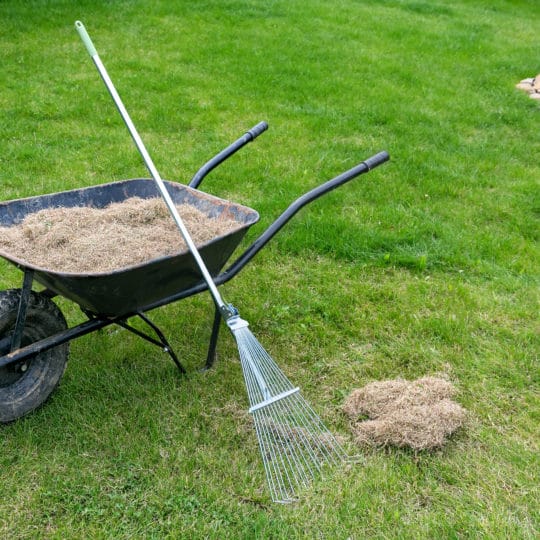How to Dethatch Your Lawn
Plus the Best Time & Tools
Posted
March 11, 2021

After a particularly harsh winter, your lawn may need a refresher come spring. If you find your grass isn’t growing as well once spring arrives, it may need some dethatching. Learn when and how to dethatch your lawn to help ensure its health throughout the season.
What is Thatch
Thatch is a layer of grass roots, shoots, and stems that form between the blades and soil. While a thin layer may act as beneficial, insulating mulch for your grass, a thick layer is bound to prevent needed nutrients from getting to the soil and growing roots. With too much thatch, your grass may feel spongy yet difficult to puncture with a finger. Plus, a thick layer of thatch is a prime place for pests and disease to thrive.
When to Dethatch Your Lawn
For the process to be the most effective, you want to dethatch your lawn when the grass is actively growing and the soil is moist. This is usually in the early spring or fall for cool-season grasses. Late spring through early summer is the best time to dethatch warm-season grasses. Dethatching can be done around the same time you plan on aerating your lawn. Both tasks help improve compacted soil and allow your yard to breathe.
How to Dethatch Your Lawn
Dethatching removes the thicker layer of decaying plant material from your grass so it’s easier for air, water, nutrients, and fertilizer to reach the soil. Without thatch in the way, water can also easily drain from your lawn, so you’re not left with pools for more disease and pests to live.
Depending on the size of your lawn and the amount of thatch, you can tackle this project on your own, or hire a professional with the right tools. One of these tools is a specialized dethatching rake. A regular rake works in the same way.
You can also rent a dethatcher from your lawn and garden shop to help with larger lawns. It’s a heavy machine, so plan accordingly. Also, If you’re going this route, be sure to mark any underground irrigation lines, sprinklers, or utility lines so you or a pro doesn’t disturb them while dethatching.
When you’re ready to dethatch:
- Mow your lawn.
- Get ready to rake. If you’re using a dethatching rake, the tines are designed to dig into the thatch, pull it upward, and loosen it from the soil for removal. You should see and feel this happening while you work.
- Your lawn may look messy once it’s fully dethatched. You’ll want to remove all the loosened plant matter so you don’t have to dethatch again.
- If you notice any bare spots after you’re done, you can spot seed these areas to repair them.
- Fertilize your lawn after dethatching to help the lawn recover.
- Keep your lawn well-watered.
Professional Assistance
While this process, in its simplest form, is something easy for a homeowner to do, it can also be handled by a professional lawn company like Cardinal Lawns. With the right tools and know-how, the job should be quick and easy, so your grass can regain its health and you can enjoy its beauty.

Download Your FREE Fall Recovery Guide
Summer’s extreme conditions can take a toll on your grass and its health. Take some time to learn how to bring your lawn back to life. This handy guide teaches you what needs to be done for a full fall recovery.